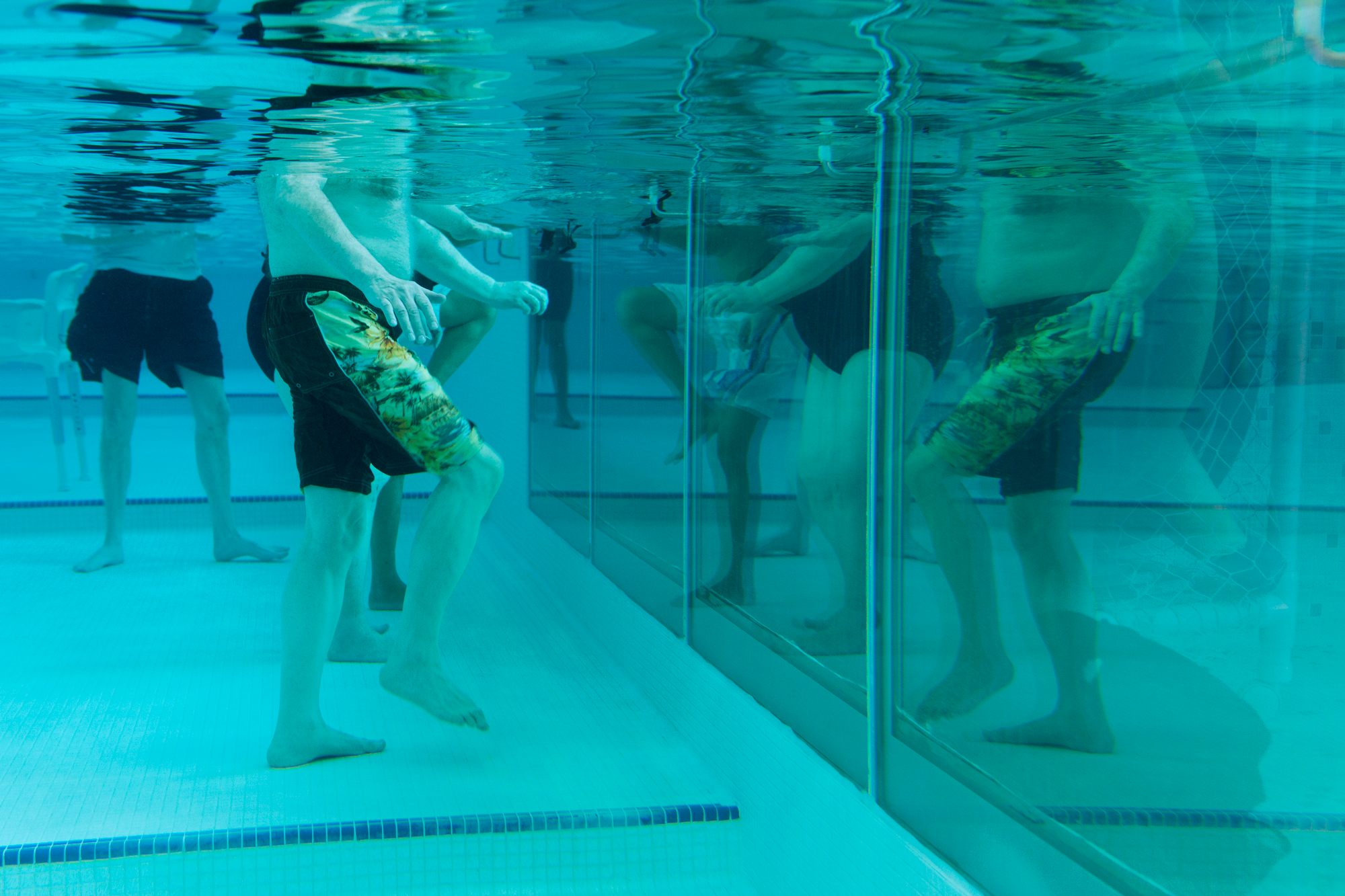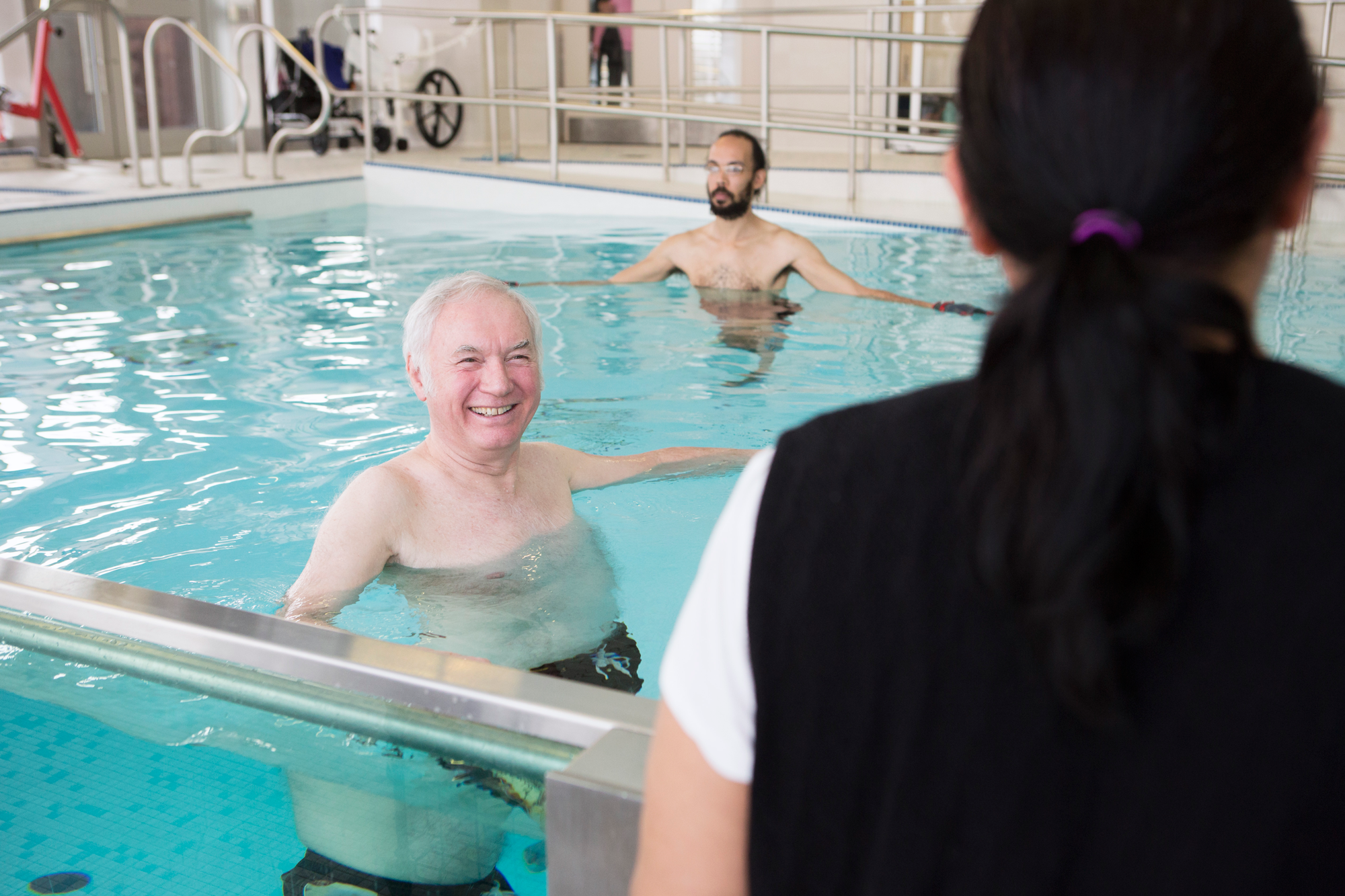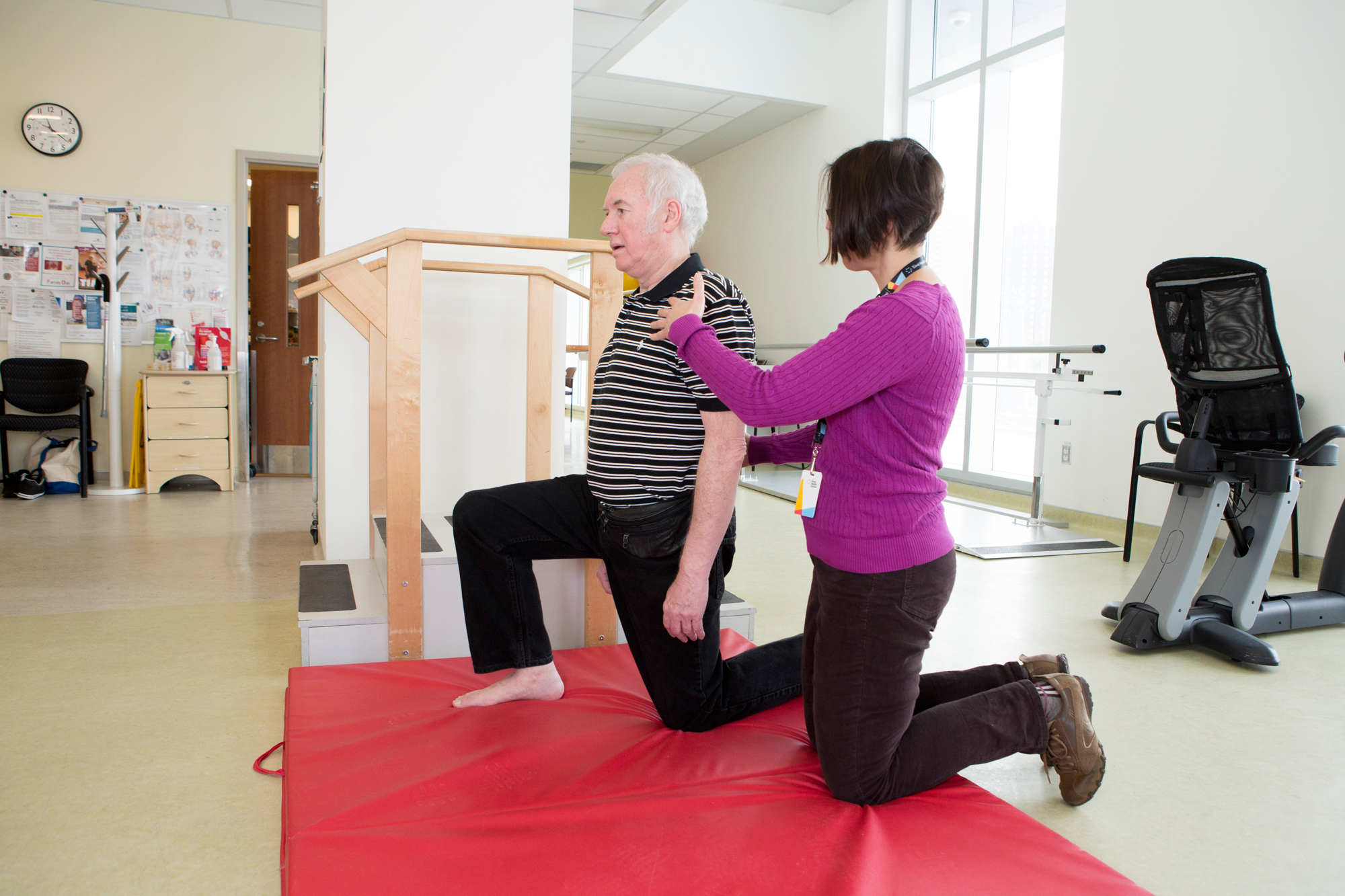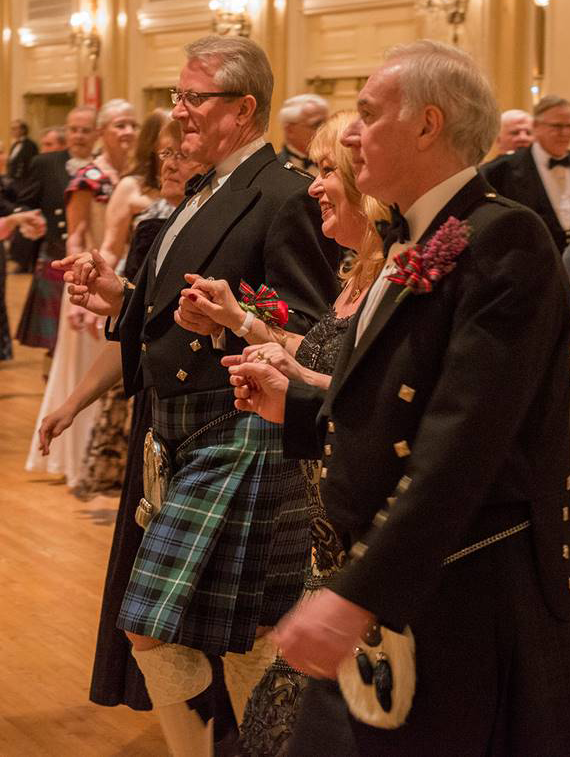

Written By: Sara Daniels
Photos By: John Packman
All his life, Duncan Skinner has liked to dance. So much so, that when Duncan retired from a long career as a Chartered Professional Accountant in the spring of 2015, he had only two goals in mind for retirement: visit his eldest daughter and her family in Arizona more often and do more Scottish country dancing with his wife Carole.
Scottish country dancing — Scotland’s form of ballroom dancing —is an athletic and social dance form, performed with as many as four couples. Its lively choreography involves intricate footwork, making it as engaging for the mind as it is for the body.
Born in Aberdeen, Scotland before coming to Canada, Duncan has been a Scottish country dancer since he was a young man. He met his wife in 1975 while dancing, when he was in his early 20s and she was still a teenager. Throughout their 39-year marriage, Scottish country dancing has been a passion they’ve shared with their two daughters and many of their friends.
They were looking forward to getting more into dancing now that Duncan had more free time. But the couple’s plans were waylaid when, in the first week of December, Duncan started to feel “funny.”
As the week progressed, Duncan felt a little “funnier” each day, until he noticed stroke-like symptoms appearing on Saturday, December 5.
“At first it felt kind of like I was getting the flu,” recalls Duncan. “But on Saturday morning, I started feeling like I had to form sentences in my head before opening my mouth. I had to guide my hand to my coffee cup, and I didn’t feel like I had the strength to lift it.”
Duncan and his wife went to the emergency room, where he told doctors he thought he was having a TIA — a transient ischemic attack, a kind of mini-stroke. But the doctor didn’t agree and sent him home with a referral for an ear, nose and throat specialist, suspecting he had an inner ear infection.
During the night, Duncan felt like he was losing contact between his brain and his arm. When he awoke the next morning, he couldn’t stand or feel his arm. His wife decided to call an ambulance. Over the next three days, Duncan remained in hospital while doctors did a number of tests, including two CT scans, neither of which showed any damage to his brain. Finally, an MRI on Tuesday morning revealed the cause of his illness.
Duncan had suffered a progressive stroke, a rarer form of stroke in which symptoms develop gradually and worsen over time. The area of the brain affected was the pons, a part of the brain stem. Approximately a half-inch in size, the pons acts as “the Union Station of the brain”, relaying messages between the cortex, spinal cord and cerebellum, and controls balance, breathing, swallowing — all the things the body does every day without consciously thinking about it.
Duncan’s stroke damaged a tiny spot in the left side of the pons, affecting his right side — arm, hand, leg, foot — as well as his ability to swallow and speak. But he soon learned how lucky he had been.
“When I started reading that the typical outcome of a pons stroke is death or intubation because you can’t swallow,” says Duncan, “I realized I dodged a very big bullet.”
Stroke is one of the leading causes of adult disability in Canada, and it is becoming more common as people develop risk factors like hypertension and diabetes earlier in life and live longer with these conditions. And yet, no two strokes are exactly alike. The losses in physical, cognitive or emotional function that patients can experience depend on the area of the brain where the stroke occurred, and can range from mild to severely life-altering. These variations make stroke treatment complex and highly individual. Treatment is also time-sensitive: The majority of recovery happens in the first three months.
 Above: Physical therapy assistant Debie Sahadeo leads Duncan through a series of aquatherapy exercises, which are tailored to strengthen his affected arm and leg
Above: Physical therapy assistant Debie Sahadeo leads Duncan through a series of aquatherapy exercises, which are tailored to strengthen his affected arm and leg
Before his stroke, Duncan was fit and used to being active. When he arrived in the inpatient stroke unit at Bridgepoint Active Healthcare, part of Sinai Health System, on December 10, it was on a gurney. He was unable to move his right hand and had only limited motion and feeling in his right arm and leg. He also struggled with swallowing, and was restricted to a pureed food diet.
Still, he approached his arrival at Bridgepoint with characteristic optimism.
“The first time I met Dr. Heather, I told her I was going to dance out of here,” recalls Duncan, laughing. “She just kind of smiled at me. And I said, ‘I didn’t say how well I’d dance out of here!’”
Duncan entered the care of Dr. Heather MacNeill, a stroke physiatrist, or rehabilitation doctor, in Bridgepoint’s neurorehabilitation unit. Dr. MacNeill — known to her patients as Dr. Heather — looks at a patient’s whole system of function to assess which physical, cognitive and emotional skills have been diminished by stroke. Working in tandem with each patient’s interdisciplinary care team, she assesses a patient’s ability to perform daily tasks like dressing and walking, as well as higher level abilities like driving, cooking and shopping — activities that require greater cognitive and physical function — to develop a treatment plan that restores as much lost function as possible.
“Many people tend to think of rehab as a last resort,” says Dr. MacNeill, “but it is actually a very powerful therapy just like medication would be. There’s a frequency, a dosage and a response we look for that lets us know if the therapy is working and to what extent.”
“The team leader is always the patient,” says Dr. MacNeill, “but we all work together in providing the care. And that’s because when something is as complex as stroke, one person can’t do everything that’s needed.”
- Dr. Heather MacNeill, Stroke Physiatrist
When patients arrive at Bridgepoint, they are placed into one of two treatment “streams”. As part of the high-intensity stream, Duncan received daily physical and occupational therapy sessions and frequent speech therapy. The reconditioning stream offers a slower pace for those who are not able to tolerate the aggressive approach of the high-intensity program. High-intensity patients spend an average of one month as inpatients before transitioning to outpatient care, while those in the reconditioning stream may stay two to three months.
As they begin rehab, patients are supported by Dr. Tammy Sieminowski, Attending Physician for the neurorehabilitation unit, who monitors their general health and manages their medications and risk factors to reduce the risk of future strokes. Dr. Sieminowski and the entire interdisciplinary team also remain vigilant for common complications, such as falls, which can be a dangerous consequence of recovery.
“When people have strokes, they generally have a very sudden and abrupt loss of function,” explains Dr. Sieminowski. “Take someone who’s been walking their dog every day for years. Suddenly they have a stroke, and perhaps they can no longer walk or speak, or they’re confused. As they start to recover, they may feel more confident and want to get out of bed but no longer have the physical or cognitive ability to do so safely. If they fall, it can have serious consequences.”
Bridgepoint’s stroke rehabilitation program, recently awarded Stroke Distinction status from Accreditation Canada for the second time, is a team-driven care model that puts the patients’ goals front and centre. For Duncan, getting back the use of all four limbs was paramount. He told his care team that, in the short term, his right leg was the first priority; his arm was second.
“The team leader is always the patient,” says Dr. MacNeill, “but we all work together in providing the care. And that’s because when something is as complex as stroke, one person can’t do everything that’s needed.”
 Above: Anita Osika, Duncan's physical therapist, corrects his alignment as he practices kneeling and standing up using his affected leg
Above: Anita Osika, Duncan's physical therapist, corrects his alignment as he practices kneeling and standing up using his affected leg
Patients like Duncan benefit from the expertise of a whole cadre of specialists who collaborate closely to deliver coordinated care designed around patients’ goals. Using dedicated physical therapy gyms and an aquatherapy pool with a view onto Riverdale Park, physical therapists focus on helping patients rebuild strength, balance and coordination in their legs and feet and on improving their ability to walk, climb stairs and exercise — both on land and in water.
Occupational therapists use a variety of strategies, including simulating home activities and chores, to help patients restore arm and hand strength and dexterity, as well as cognition, so they can resume daily tasks like doing laundry, taking their medication, cooking for themselves and returning to work and/or driving.
"The first time I met Dr. Heather, I told her I was going to dance out of here. She just kind of smiled at me. And I said, 'I didn't say how well I'd dance out of here!"
- Duncan Skinner, Patient
“They really try to get you ready to go home,” says Duncan. “You handle something hot, something sharp. I’ve cut vegetables, made myself coffee, loaded and unloaded the washing machine, folded laundry. My therapy ‘homework’ one day was to iron shirts with my affected arm.”
For those patients who rely on a wheelchair, experts in the seating clinic work with their occupational therapy colleagues to build customized wheelchairs that accommodate patients’ long-term needs. And in some cases, vocational occupational therapists work with employers to help get patients back to work as smoothly and as quickly as possible — a service unique to Bridgepoint’s program.
Bridgepoint is also one of the only rehab facilities in Toronto to have a state-of-the-art Augmentative Communication and Writing Aids Clinic, a specialized service that occupational therapists and speech-language pathologists use to evaluate patients’ abilities to communicate after stroke and teach them how to use the tools or devices that can help them better express themselves. Speech-language pathologists also work closely alongside dietitians to help patients regain the ability to swallow and return to eating a normal diet.
Nurses, social workers, pharmacists and providers for spiritual care, recreation therapy, geriatrics, psychiatry and internal medicine, among others, also collaborate with the patient’s core rehab team as needed.
“My recovery has been rapid, but the therapy is aggressive,” says Duncan. “They practice ‘tough love’. When you demonstrate even the slightest ability, they give you something new to do. They push and push and push to get you to be as independent as possible.”
Duncan and his wife were astonished by the speed of his progress. Two weeks after he first arrived at Bridgepoint, on a gurney and with significantly impaired function, Duncan went home for a visit with his family on Christmas Day. He was able to play with his daughter’s dog and get back up from the floor on his own. He had also graduated to a minced-food diet.
“My wife had a hard time keeping up with my progress,” says Duncan. “She was expecting the worst — that I’d be in a wheelchair for the rest of my life. And by New Year’s Eve I was walking without a cane.”

Duncan and his wife Carole (on his right) in 2013, dancing, at the Tartan Ball, hosted by the Royal Scottish Country Dance Association of Toronto. Photo credit: Ian White
By mid-February, Duncan was a month into his outpatient therapy and had regained strength and full range of motion in his right hand and arm. His right leg and foot were close behind.
His progress was initially slowed a bit by his foot, which he couldn’t articulate fast enough to walk without shoes. Now, after intense practice during his physical therapy sessions, he can not only walk but also kick and dribble a soccer ball in bare feet.
“I’m even more motivated that the right foot is working now,” says Duncan. “There’s observable improvement every day, and I can see it, even if my wife or therapists don’t. I notice every twitch in every finger and toe.”
His stroke has changed his timeline, but not his retirement goals. In May, Duncan and his wife enjoyed a visit to their daughter and her family in Arizona that they had postponed when he became ill. Next up: a triumphant return to Scottish country dancing.